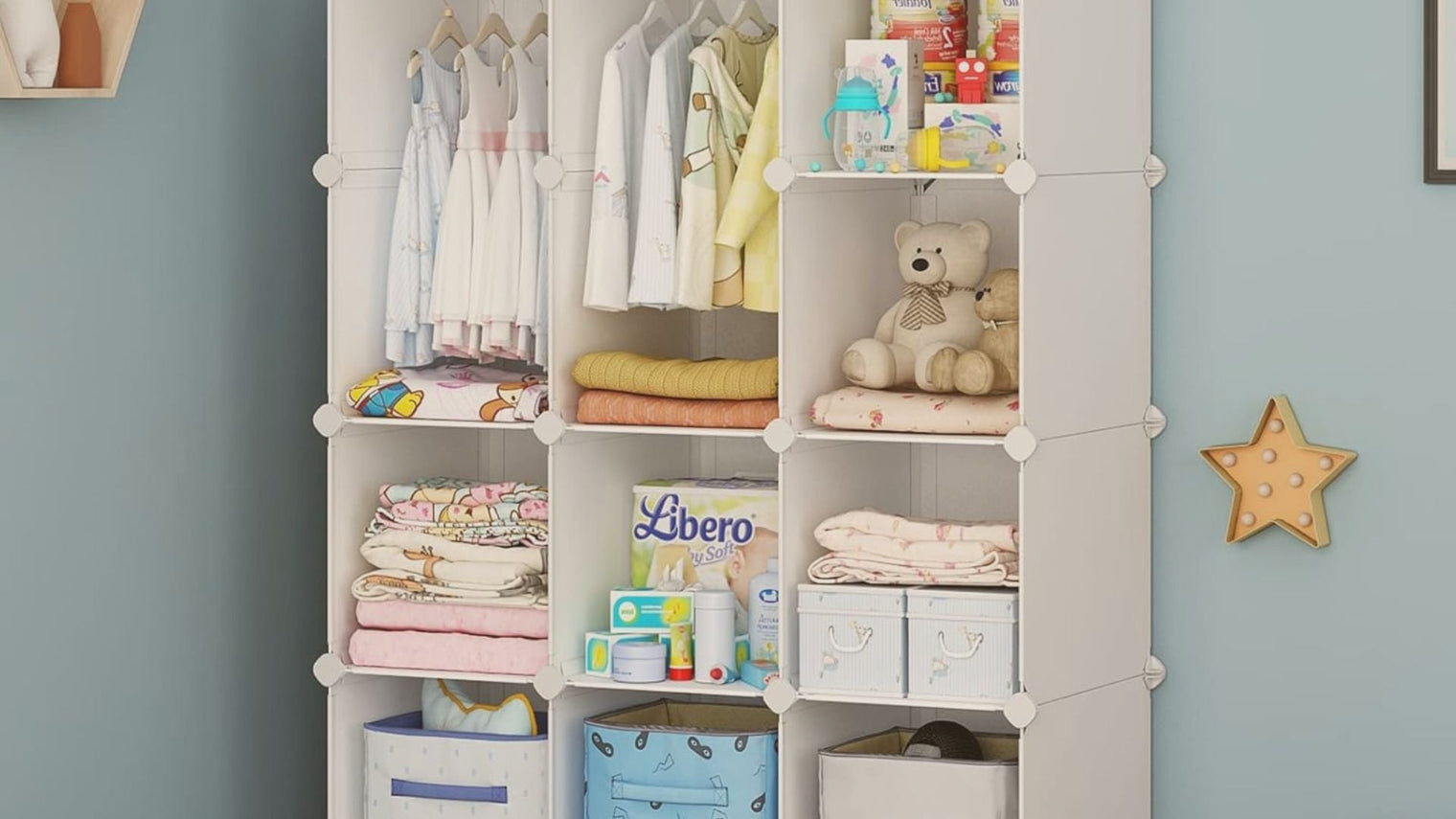Child-friendly wardrobes have evolved beyond mere storage spaces to become interactive tools that foster children's development. These innovative wardrobes offer educational benefits by teaching organizational skills through compartmentalized storage, promoting imagination and role-play with creative designs, and enhancing literacy with built-in chalkboards or whiteboards. Engaging children in organizing their wardrobe encourages responsibility and independence. By combining functionality with fun, these wardrobes create a vibrant learning environment that nurtures cognitive development, spatial awareness, and creativity, ultimately transforming everyday tasks into valuable educational experiences.
A wardrobe might seem like a simple piece of furniture—just a place to hang clothes, tuck away shoes, and keep things tidy.
But when it comes to children, a wardrobe can be so much more than a storage solution. It can become a powerful tool for learning, independence, and growth.
Think of it this way: your child’s wardrobe is one of the first spaces they’ll learn to manage on their own. From choosing what to wear in the morning to putting clothes away neatly, these everyday actions can help children develop essential life skills.
When thoughtfully designed, a wardrobe can encourage independence, creativity, and responsibility—traits that shape a child’s confidence far beyond the bedroom.
At Dannico Woodworks, we believe children’s furniture should do more than fill a room. It should support their development, nurture their curiosity, and fit seamlessly into family life.
That’s why we design wardrobes that combine durability with functionality, tailored to the unique needs of growing children.
Let’s explore how something as ordinary as a wardrobe can unlock extraordinary learning opportunities for your child.
1. Encouraging Independence Through Choice
One of the earliest ways children express themselves is through what they wear. Having a wardrobe designed for their height and abilities allows them to explore this independence safely.
Instead of relying on parents to fetch clothes, a child-sized wardrobe puts everything within reach.
When kids can pick out their outfits each day, they begin to practice decision-making, independence, and self-confidence.
Sure, there may be days when they pair polka dots with stripes, but that’s part of the process. These small choices empower them to think for themselves.
At Dannico Woodworks, we build wardrobes that consider a child’s perspective. Low-hanging rails, open shelves, and easy-to-grip handles make the experience simple and rewarding.
2. Teaching Organization and Responsibility
Wardrobes do more than store clothes—they teach children how to organize their world. By assigning sections for tops, bottoms, shoes, or accessories, children learn categorization skills that are essential for problem-solving later in life.
When a child puts away their clothes after laundry day, they’re practicing responsibility. When they remember where their favorite sweater goes, they’re developing memory and routine. These small actions shape discipline and order, all disguised as daily habits.
The key is creating a wardrobe setup that makes sense for kids. Clear sections, labeled baskets, and a place for everything help children succeed and feel proud of their efforts.
3. Building Fine Motor Skills
Opening doors, pulling out drawers, fastening buttons, and hanging clothes—these aren’t just everyday tasks; they’re opportunities for children to refine fine motor skills.
A wardrobe designed with easy-to-use mechanisms ensures children can practice these movements safely, without frustration.
Handles designed for little hands and drawers that glide smoothly give kids the confidence to manage their wardrobe independently.
Over time, these repetitive motions strengthen coordination and build dexterity, which supports everything from handwriting to tying shoelaces.
4. Encouraging Self-Expression and Creativity
A wardrobe is like a mini stage for self-expression. Children experiment with clothing choices, accessories, and even the way they fold or arrange items.
This freedom allows them to discover their unique preferences and personalities.
Think of how much pride a child feels when they choose an outfit for a birthday party or even just for school. These decisions help them understand identity and boost self-esteem.
A thoughtfully designed wardrobe gives them the canvas they need to explore their creativity safely and confidently.
5. Reducing Morning Stress
Every parent knows the morning rush can be chaotic. When a wardrobe is organized and child-friendly, it reduces stress for both kids and parents.
Children know exactly where to find their clothes, and they can get dressed without constant supervision.
This structure not only makes mornings smoother but also helps kids learn the value of preparation.
Choosing an outfit the night before becomes a fun, shared activity that sets the tone for a calmer day ahead.
6. Safety and Durability Matter
Children’s furniture must be more than functional—it must be safe. A wardrobe that wobbles, has sharp edges, or uses flimsy materials can quickly become a hazard.
At Dannico Woodworks, every wardrobe is crafted with durable materials and child-safe finishes.
Rounded corners, stable construction, and thoughtful design ensure peace of mind for parents.
Our goal is to create furniture that not only lasts but grows with your child, adapting as their needs evolve.
7. A Wardrobe That Grows With Them
Children grow quickly, and so do their needs. A well-designed wardrobe should evolve alongside them. Adjustable shelving, removable baskets, and flexible layouts make it easy to adapt as your child gets older.
What starts as a simple setup for a toddler’s clothes can eventually transition into a functional wardrobe for a pre-teen.
Investing in a versatile design saves families from frequent furniture replacements while supporting your child’s journey from one stage to the next.
FAQs
At what age should I introduce my child to their own wardrobe?
Most children can start using a simple wardrobe setup by age two or three. At this stage, they love imitating adults and can begin learning how to pick out clothes and put things away.
How can I make wardrobe organization fun for my child?
Use color-coded bins, picture labels, or themed baskets. For younger children, adding visual cues makes it easier to remember where things belong.
What’s the best material for a child’s wardrobe?
Look for solid, durable wood with non-toxic finishes. Sturdy construction ensures safety, while natural finishes create a timeless look that fits any room.
How do I encourage my child to keep their wardrobe tidy?
Start small. Encourage them to put away one type of clothing at a time (like socks or pajamas).
Celebrate their efforts and keep the routine consistent. Over time, tidying up becomes second nature.
Can a child’s wardrobe really impact learning?
Yes. Through everyday use, children practice independence, organization, fine motor skills, and decision-making—all of which contribute to their growth and development.
Further Resources
- Montessori Principles for Independence at Home
- Parenting Tips on Teaching Responsibility
- Dannico Woodworks Collection of Child-Centered Furniture
Conclusion
A wardrobe may start as a simple piece of furniture, but in a child’s world, it becomes a tool for independence, creativity, and growth. By giving children access to furniture designed with their needs in mind, parents aren’t just keeping clothes organized—they’re encouraging responsibility, boosting confidence, and creating daily opportunities for learning.
At Dannico Woodworks, we believe every piece of furniture should support your child’s journey to independence while giving you peace of mind. Our wardrobes are crafted to last, adapt, and inspire.
So here’s the question: if your child’s wardrobe could do more than store clothes, how much more could they learn from it?

